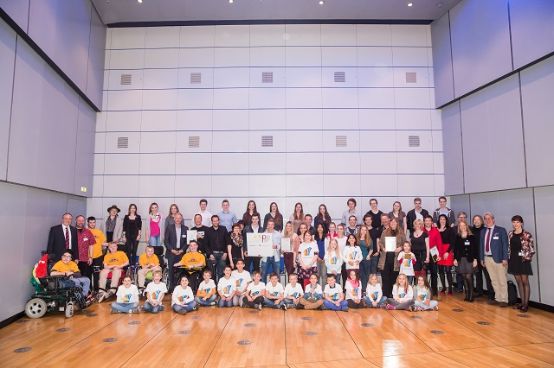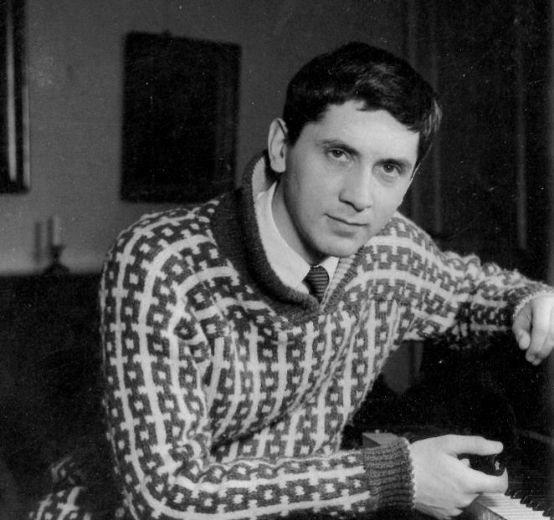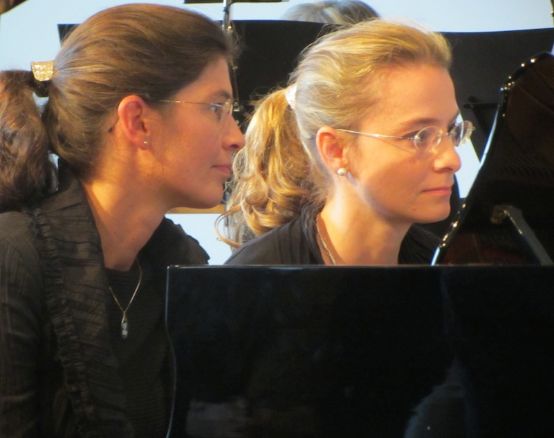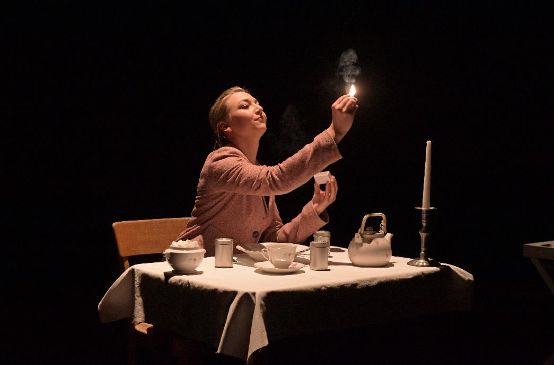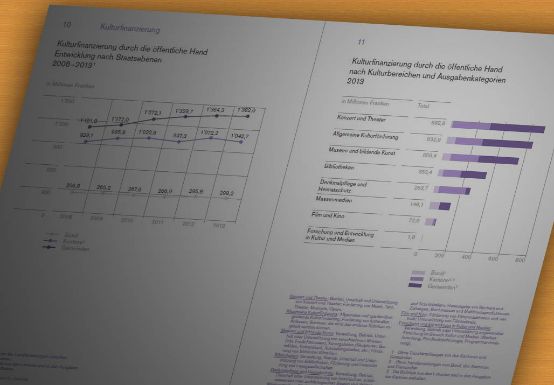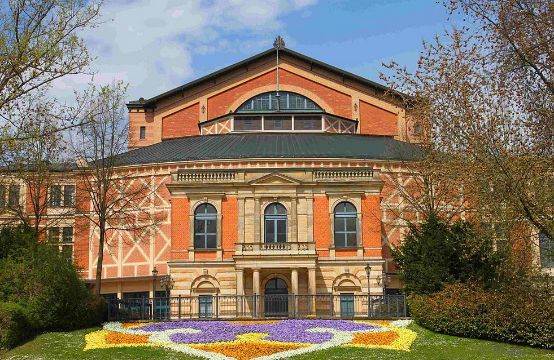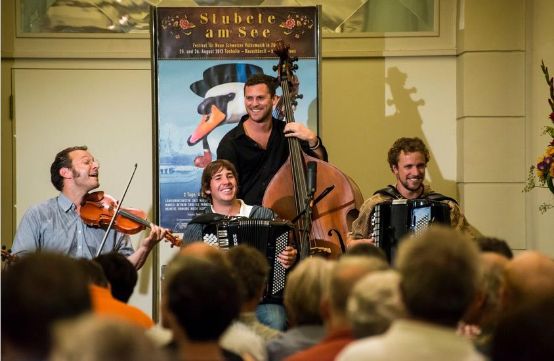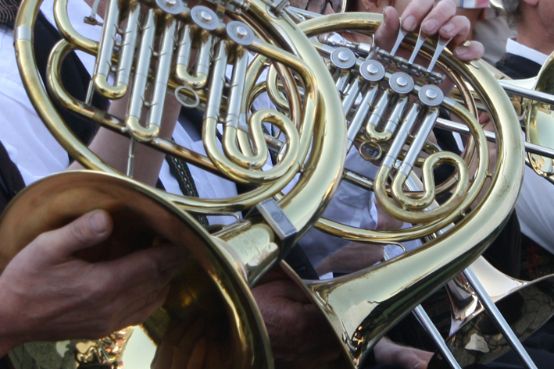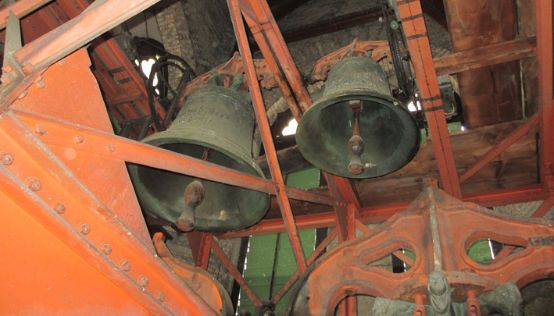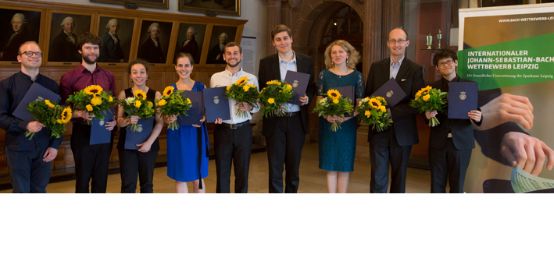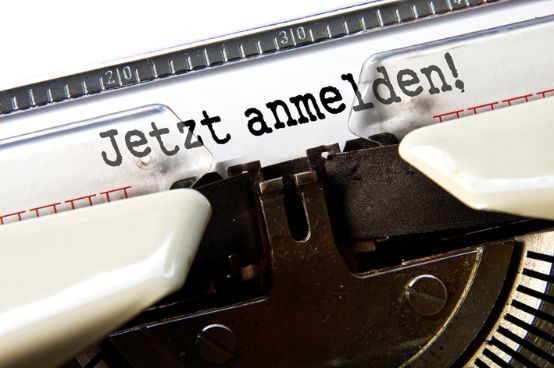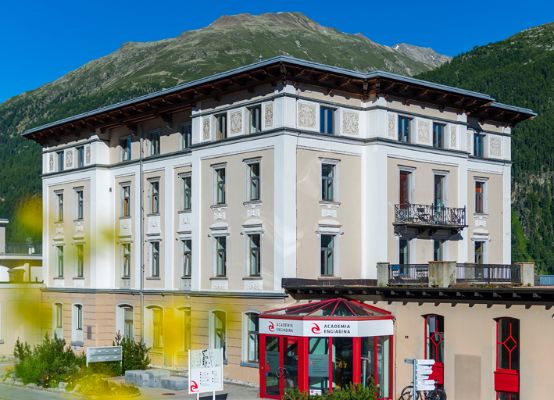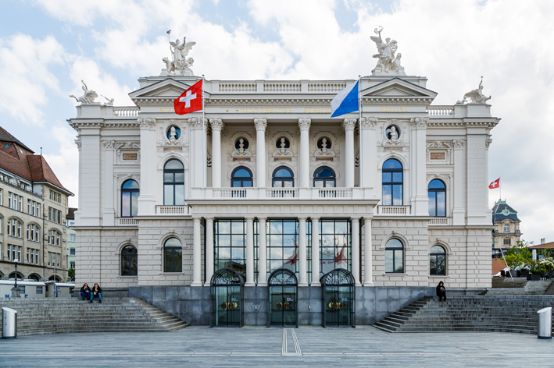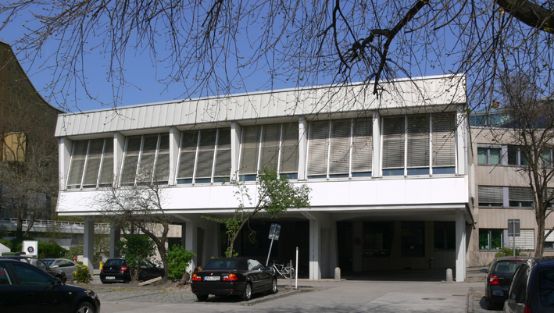The Collegium musicum Nürnberg performed under the direction of Florian Grieshammer, supported by members of the Südwestdeutsche Philharmonie. The soloists in the piano concerto were Katja and Ines Lunkenheimer. To get straight to the point: Mendelssohn's old, familiar symphony blended harmoniously with Bolli's contemporary music. Or: the contemporary and the well-tried can indeed complement each other.
Nevertheless, it was helpful that the composer offered a few introductory words. Fréderic Bolli spoke about his composition in an entertaining way, allowing the attentive audience to participate in the intricacies of the KlaVierHände concerto. The title itself is original: a play on words that reduces the usual technical term "Concerto for piano four hands and orchestra" to a concise formula. Bolli certainly draws on the tradition of the classical and romantic piano concerto in terms of form and sequence of movements. The work has three movements. In the first movement, Bolli even uses the classical sonata form as the basic scheme. It would therefore be all too easy to accuse him of writing conventionally. However, his modern and contemporary approach is evident in the details. Furthermore, in the differentiated inclusion of timbres and the special instrumentation.
The opening movement is entitled "Capriccio". It begins with a rapid run for the pianists. The opening theme is rhythmically concise. The secondary idea is rather lyrical. Some themes and motifs are deliberately kept simple so that they can be played on the timpani. However, the opening movement is also characterized by a lyrical, dreamy middle section in a slower tempo. In the fast sections, clusters, veritable clusters of notes, are incorporated. Virtuoso and very spacious playing unfolds on the keys from the lowest to the highest registers. Katja and Ines Lunkenheimer play their part skillfully. Themes and motifs are played back and forth between piano and orchestra, switching from the woodwinds to the percussion of the xylophone and back to the piano. After the recapitulation, the soloists were able to let off steam in a wide-ranging cadenza. This also testifies to how Bolli refers to tradition without being outdated. This music is too lively in the best sense of the word. The Collegium musicum also did justice to the demanding orchestral part.
The second slow movement is entitled "Elegy for Elke". It is mourning music of almost neo-romantic expressiveness. To a certain extent, the movement ties in with the French Baroque tradition. So-called "Pièces de Tombeau", set for harpsichord or lute or in the form of a solo or trio sonata, commemorated deceased musicians and composers. An expressive solo for cor anglais, based on a twelve-tone row, effectively sets the tone for the elegiac character of the movement. However, as Elke was a cheerful person, the mood later changes to dance. A waltz appears in the piano solo part. Sighing figures with glissandi dominate the strings. The Nuremberg orchestra performed the "Elegy for Elke" with great suspense. Florian Grieshammer succeeded in conjuring up the grand sweep of the movement in his conducting.
The finale with its rondo character again shows classical traits. A lively piece of music in the best sense of the word, with a few extras. One extra, for example, is a small inserted canon played con sordino by the strings. The finale is full of wit and is reminiscent of the humor of Joseph Haydn. Charming solo passages by the clarinet and bassoon are interwoven. The motifs are played back and forth in a lively manner. However, as in the first movement, a melancholy middle section contrasts with the joyful character of the piece before the rondo theme returns.
After a short break, Felix Mendelssohn's praise of Italy, the Italian Symphony, followed, in which the composer processes his own travel impressions. Like his friend and patron Johann Wolfgang von Goethe, Mendelssohn sees Italy as the promised land of the arts and high culture and celebrates the scenic beauty and ancient greatness of Italy in his music. The opening Allegro vivace already displays cheerful southern timbres. Grieshammer took the tempo somewhat more restrained than one is used to in this movement. Nevertheless, the opening brass fanfares set effective accents. The Andante con moto evokes a solemn procession of singing monks striding along to chorale-like singing. The solemn melody floats above a throbbing ostinato bass and illustrates Mendelssohn's preoccupation with Johann Sebastian Bach. This movement with sighing flutes and clarinets was also beautifully realized. The minuet-like Con moto moderato may capture something of the scent of blossoming orange groves. Especially in the romantically wistful trio with gentle French horn sounds and swaying woodwinds. The finale celebrates the Saltarello, a fast Italian dance.
